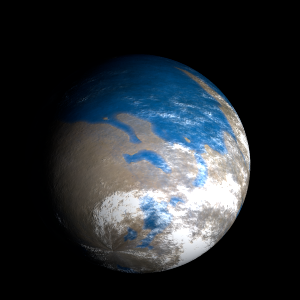|
|
Space Astro
|
Info for exoplanet "Hiteus Lytea"
| Scientific (actual) data |
|---|
| Name | Kepler-298 c |
| Planet status | Confirmed |
| Radius | 0.172 |
| Orbital period | 22.9288 |
| Semi major axis | 0.136 |
| Discovered | 2014 |
| Updated | 2021-02-05 |
| Tconj | 2455160 |
| Impact parameter | 0.59 |
| Publication | Announced on a website |
| Detection type | Primary Transit |
| Alternate names | 2MASS J18520955+4849312 c, K01430.02, KIC 11176127 c, KOI-1430 c, KOI-1430.02, WISE J185209.55+484931.2 c |
| Star name | Kepler-298 |
| Right ascension | 283.04° |
| Declination | 48.83° |
| Mag j | 13.718 |
| Mag h | 13.139 |
| Mag k | 13.075 |
| Star distance | 525.98 |
| Star metallicity | -0.121 |
| Star mass | 0.65 |
| Star radius | 0.58 |
| Star temperature | 4465 |
| Star alternate names | 2MASS J18520955+4849312, KIC 11176127, KOI-1430, WISE J185209.55+484931.2 |
| Wikipedia article | Kepler-298 c |
Back
| |
| Fictional info (?) |
|---|
| Suggested name | Hiteus Lytea |
| Planet type | Planet |
| The molecular hydrogen has probably photodissociated, and the free nitric oxide has been swept into interplanetary space by the solar wind because of the lack of a hydrogen chloride layer.
A prominent result is the "great red spot", a giant storm that is known to have existed for centuries since it was first seen by telescope.
Wind speeds can reach 158 metres per second. |
| Atmosphere | Nitric oxide | 53% |
| Carbon dioxide | 46% |
| Molecular hydrogen | 0.56% |
| Hydrogen chloride | 0.0093% |
| Atmospheric pressure | 21 bar |
 |
| No known satellites |
| Google search for Hiteus lytea |
|
Website by Joachim Michaelis
|
|
|
|